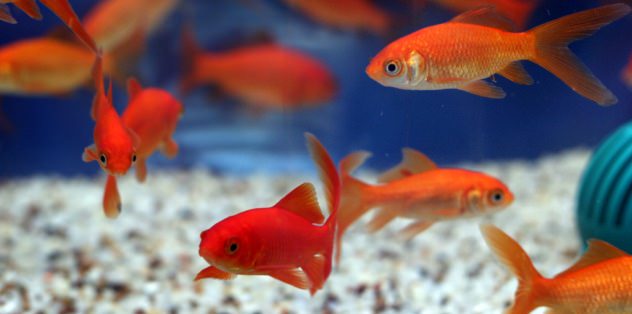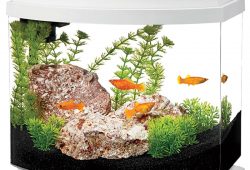Goldfish Reproduction
Everything You Need to Know About Goldfish Reproduction. If you are planning on keeping goldfish at home or in a school classroom or is a water garden, it is a good idea to educate yourself about the basic elements of goldfish care and of the details of goldfish reproduction. Goldfish is one of the easiest pets to care for and maintain and hence they are a great choice young children.

They also make for interesting companions for adults who are unable to make the time commitment for larger pets. Given their minimal demands they work in different settings like homes, offices and classrooms. The bright and active fish make for soothing entertainment and with a little education about the does and don’ts of goldfish care you can be a successful aquarist.
Goldfish need non-chlorinated water and, unless specifically described as tropical, they do well in room temperature water. You have to maintain a clean aquarium and it is a good idea to use a cover for your tank to reduce dust and other pollutants. The regular oxygen in the water is adequate for goldfish and you do not need an air pump to generate more oxygen.
Goldfish do well with commercially available flake food and you need to feed them once a day – overfeeding is a frequent concern with fish and this is something to watch out for. Put enough flakes in for a 5 minute feeding session as a broad rule of thumb. By providing the right setting and food, you have created a good everyday home for your goldfish. If your fish handle the initial transfer and settling down well, you can expect to have the goldfish with you for as long as 10 years.
If you have more than one goldfish in your tank or outdoor pond, it is also worth understanding goldfish reproduction because in nature they are prolific breeders. There is plenty of water splashing during the mating of fish and then the female releases a set of eggs that will attach themselves to the first surface they touch.
The eggs hatch in the first 3 or four days and initially the tiny fry that comes out clings to the surface of the aquarium. It still has the yolk sac attached and it takes about 4-5 months for the fry to become a fish and start acquiring the colors that we associate with the species.
If goldfish reproduction is this simple, does this mean you are taking on a whole breeding ground by taking on a couple fish? Not really. Successful goldfish propagation can happen only if there are plenty of covered nooks and crannies and secluded areas for the female to shed her eggs around. Also, if the owner is not looking out for the eggs it is likely that the older fish will eat the eggs. So, in the natural course of things in a home setting, your goldfish are not likely to reproduce.
If you are seeking to have new fish though from your existing pets, it is easy enough to achieve. Goldfish reach sexual maturity when they are 1 to 2 years old and so it is advisable to get goldfish of that age. If there is a male and female in your tank they will naturally be drawn to mate.
Your breeding pair will benefit from a diet of live food like blood worms although you still have to be cautious about over-feeding. You can provide the goldfish optimal conditions by keeping the water extremely clean and unpolluted. Expert breeders suggest that the water temperature should be around 16 degree Celsius at this time.
You should buy some real aquarium plants and introduce it into your tank or pond, to create a space where the female can release the eggs. Many eggs are laid in a spawning period, and you should look to have quite a few tiny fries if the process is successful. Once you see the eggs in the water, it is best to remove the older fish from that environment as they may end up foraging on these eggs.
Once the goldfish are removed, you can increase the warmth of the water by a few degrees and within about 78 hours you will start to see the eggs hatch. Now all you need to do is maintain good water quality and feed the goldfish fry high nutrient food such as brine shrimp and wait for the creatures to mature. This generally takes about four to six months and then you will have full grown goldfish.



